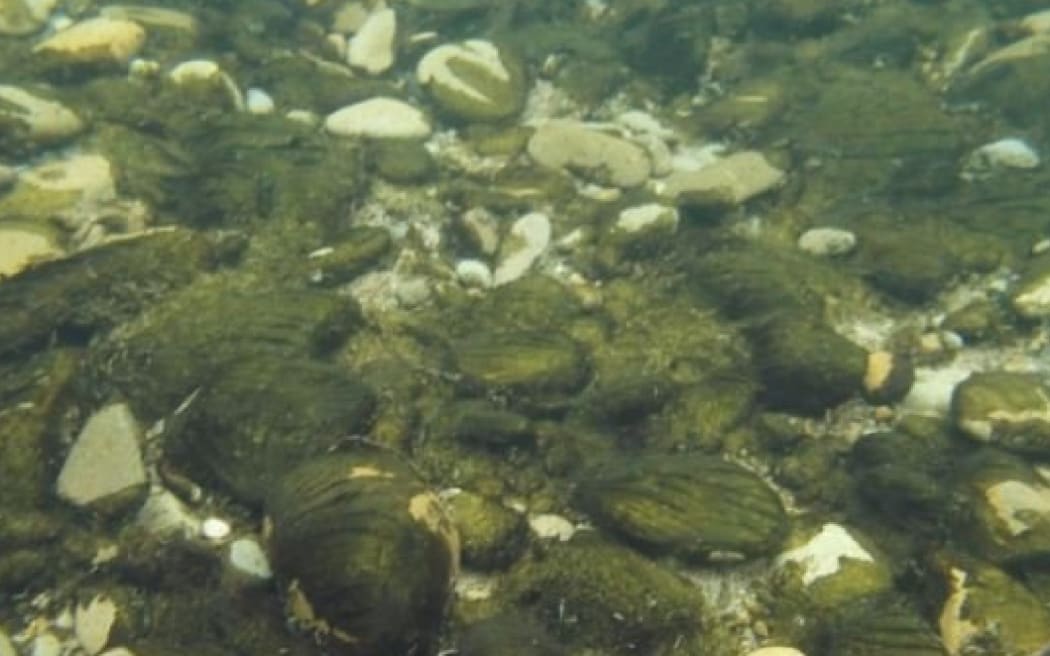
Phormidium, an algae lethal to dogs. Photo: West Coast Regional Council / supplied
Extraordinarily warm weather and no real rain is creating conditions for algal blooms in West Coast waterways, which can be lethal to dogs.
West Coast Regional Council hydrology staff are looking for 'blue-green algae', otherwise known as phormidium.
Science team leader Jonny Horrox said they were keeping an eye out for it during routine waterway monitoring because the algal bloom could cause skin irritation.
And it can be lethal to dogs if they ingest it.
Horrox said it was not possible for the council to monitor all West Coast waterways, but people need to know how to identify it.
"At this time, we do not know of any specific sites that are of concern but this could change with the weather conditions we are experiencing," he said.

Warm, stagnant, low water levels promoted ideal conditions for phormidium, which is a cyanobacteria.
It has characteristics in common with both bacteria and algae, and is often referred to as blue-green algae.
"It is the only freshwater cyanobacteria that is known to occur regularly on the West Coast," Horrox said.
"It occurs naturally and year round in many waterways, but when rivers are warm, with stable flows, it can grow quickly forming thick, dark mats over a large amount of a riverbed."
The algae can produce harmful toxins.
"If the bed of a river is covered with thick dark brown or black mats that have a slimy or velvety texture and an earthy or musty smell, it might be better to avoid these locations," Horrox said
"Caution should be applied" if it was very abundant at swimming and dog walking spots.
This included upstream of swimming spots where large amounts of algae could lead to skin irritation for bathers.
Dogs were particularly at risk when swimming and drinking from infested water.
"Even small amounts of exposed phormidium on river margins can pose a risk to dogs and children that might ingest the algae.
"If symptoms appear after being in contact with a waterway, contact your doctor or a veterinarian immediately."
Symptoms of cyanotoxin poisoning in dogs usually appear within 30 minutes include: panting, lethargy, muscle tremors, twitching and convulsions.
The public can report potential problem levels of phormidium by contacting the regional council science team on 0508 800 118 or email info@wcrc.govt.nz.
If possible, photographs are useful to illustrate the algal bloom extent.
Local Democracy Reporting is Public Interest Journalism funded through NZ On Air.

